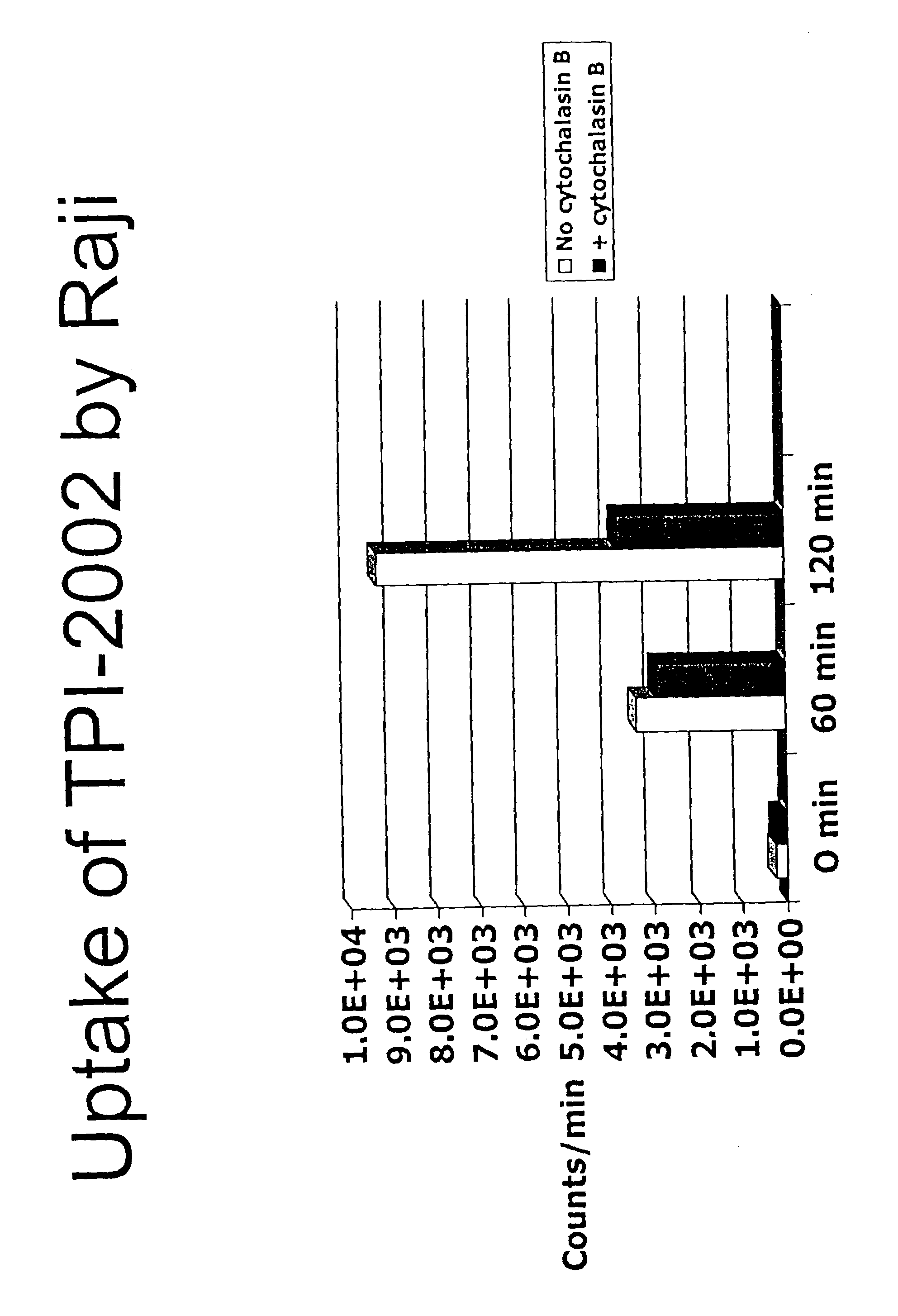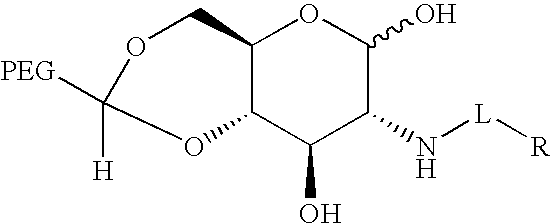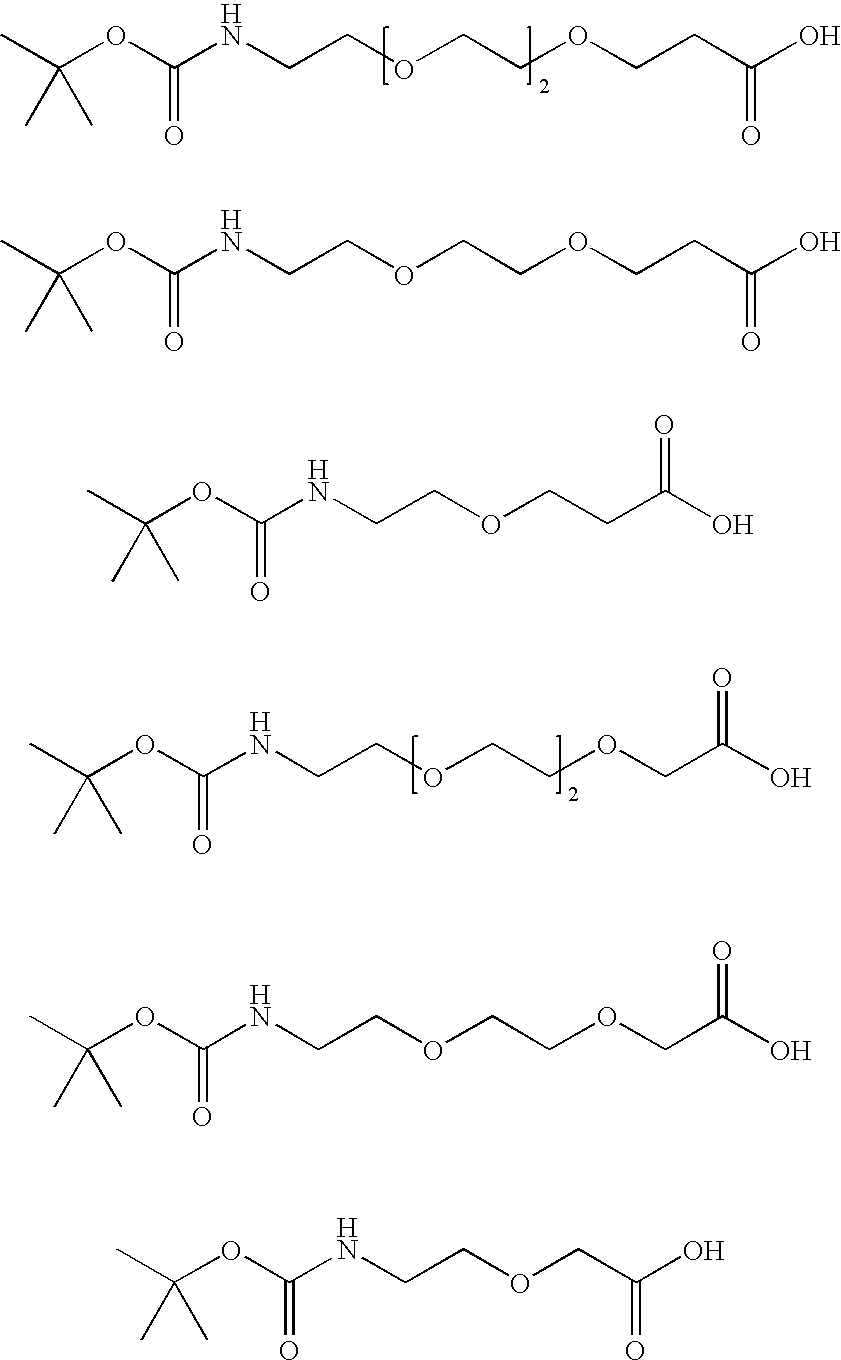Compositions and methods for treating cancer
a cancer and composition technology, applied in the field of compositions and methods for treating cancer, can solve the problems of drug and radiation used to kill cancer cells that are toxic to normal tissue cells, drug almost inevitably cannot kill all cancer cells, and side effects are often severe, so as to improve the delivery of an anti-neoplastic agent
- Summary
- Abstract
- Description
- Claims
- Application Information
AI Technical Summary
Benefits of technology
Problems solved by technology
Method used
Image
Examples
example 1
Synthesis of Glucosamine-Camptothecin Conjugate
[0136]This example illustrates the preparation of a camptothecin-glucosamine conjugate having an acetate ester non-releasable linkage. 10-Hydroxy-camptothecin acetate salt (5 mg) was dissolved in 0.5 mL anhydrous DMF. Sodium carbonate (7.2 mg) and diisopropyl ethyl amine (12 μL) were added, followed by t-butyl bromoacetate (6 μL). After stirring for 4 days at 37° F., the 10-position alkylated product was produced as the nearly sole product. The product was of faster mobility on thin layer chromatography (TLC silica plate with 5% H2O in acetonitrile) relative to the starting material. The reaction mixture was evaporated under vacuum, dissolved in methylene chloride and extracted with H2O. The organic layer was separated, concentrated under vacuum and treated with neat trifluoroacetic acid (1 mL) for 1 hour to deprotect the t-butyl ester, leaving the free carboxylic acid. Volatile components were removed under vacuum, and the acid product...
example 2
Synthesis of a DOTA-Glucosamine Conjugate
[0137]This example illustrates the synthesis of a DOTA-glucosamine conjugate. Tri-t-butyl-DOTA (4,7,10-tri-(t-butyloxycarbonylmethyl)-1,4,7,10-tetraazacyclododecan-1-yl-acetic acid, 50 mg, 87 micromoles, from Bachem) was dissolved in 300 microliters of DMSO, and 12 microliters (87 micromoles) triethylamine was added, followed by 42 mg (95 micromoles) of BOP (benzotriazol-1-yloxy)tris(dimethylamino)-phosphonium hexafluorophosphate). The reaction mixture was stirred for 1 hour at room temperature followed by the addition of a solution of glucosamine HCl (21 mg, 95 micromoles) and triethylamine (13.3 microliters, 95 micromoles) in 450 microliters of H2O / DMSO (1 / 2 by volume).
[0138]The resulting mixture was stirred for two days at room temperature, and solvent was removed by evaporation under reduced pressure. The resulting oil was dissolved in 0.5 mL of MeOH and precipitated into 5 mL of diethyl ether. The supernatant was recovered and concentrat...
example 3
Uptake of the DOTA-Glucosamine Conjugate
[0140]This example illustrates the uptake of the DOTA-glucosamine conjugate prepared in Example 2 in Raji lymphoma cells. The cells used were Raji cells from culture in one t-75 flask. The reagents used were Phosphate Buffered Saline, DOTA-glucosamine conjugate, Indium-111 chloride salt, Indium Chloride, and Cytochalasin B (Sigma, in a stock solution of 1 mg / mL water).
Labeling DOTA-Glucose with Indium
[0141]To 60 μL DOTA-glucosamine in ammonium acetate buffer (pH 6.5) were added 2 μL of Indium-111. The resulting mixture was incubated for 1 hr at 37° C. An equimolar amount of non-radiolabeled Indium chloride was added, and the mixture was incubated for an additional 1 hr at 37° C. The resultant mixture was applied to a Chelex polyanionic ion-exchange column in deionized H2O, and the flow-through was collected. The uptake reaction was carried out as follows. First, 15 mL of culture medium with Raji cells was centrifuged for 10 min. at 800×g; then...
PUM
| Property | Measurement | Unit |
|---|---|---|
| Fraction | aaaaa | aaaaa |
| Fraction | aaaaa | aaaaa |
| Fraction | aaaaa | aaaaa |
Abstract
Description
Claims
Application Information
 Login to View More
Login to View More - R&D
- Intellectual Property
- Life Sciences
- Materials
- Tech Scout
- Unparalleled Data Quality
- Higher Quality Content
- 60% Fewer Hallucinations
Browse by: Latest US Patents, China's latest patents, Technical Efficacy Thesaurus, Application Domain, Technology Topic, Popular Technical Reports.
© 2025 PatSnap. All rights reserved.Legal|Privacy policy|Modern Slavery Act Transparency Statement|Sitemap|About US| Contact US: help@patsnap.com



